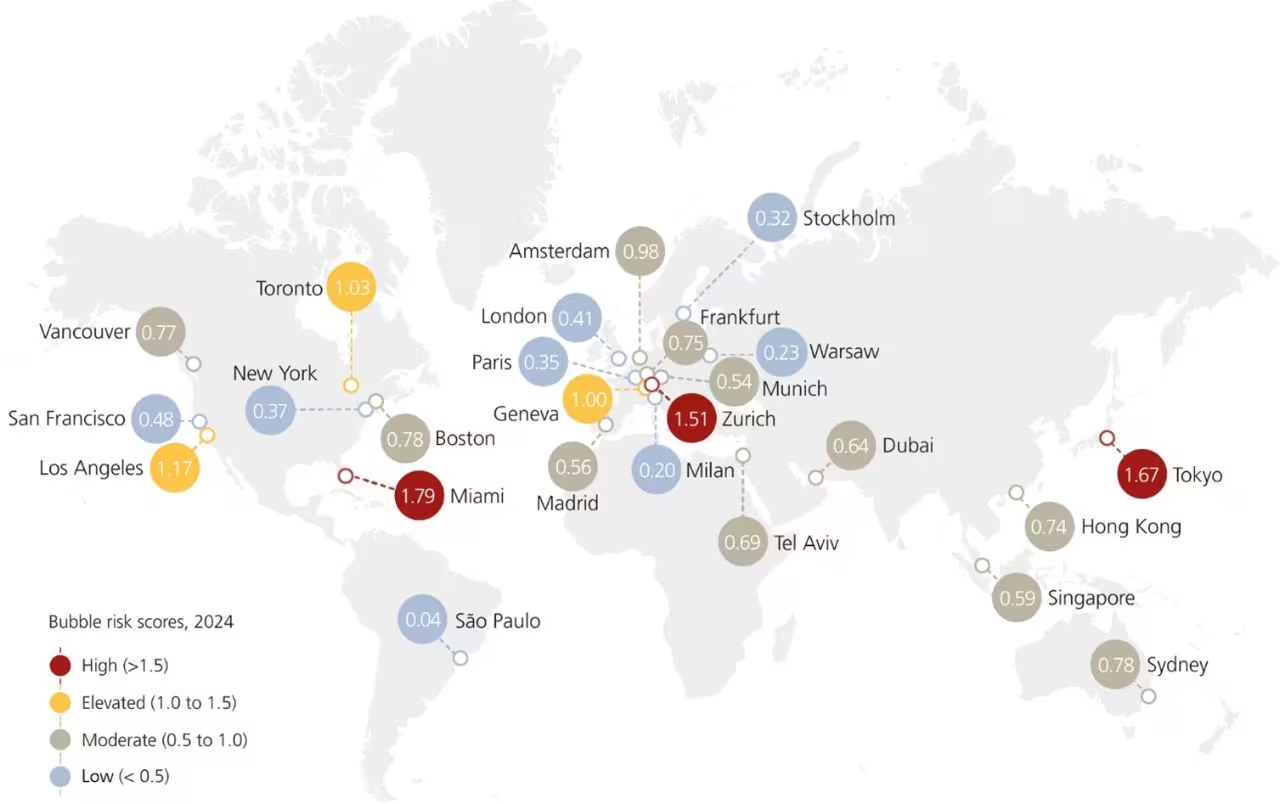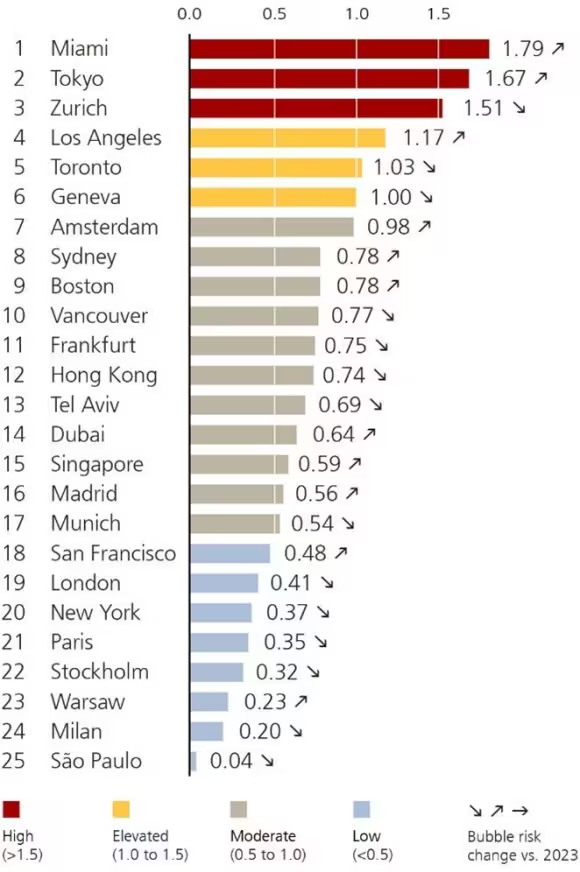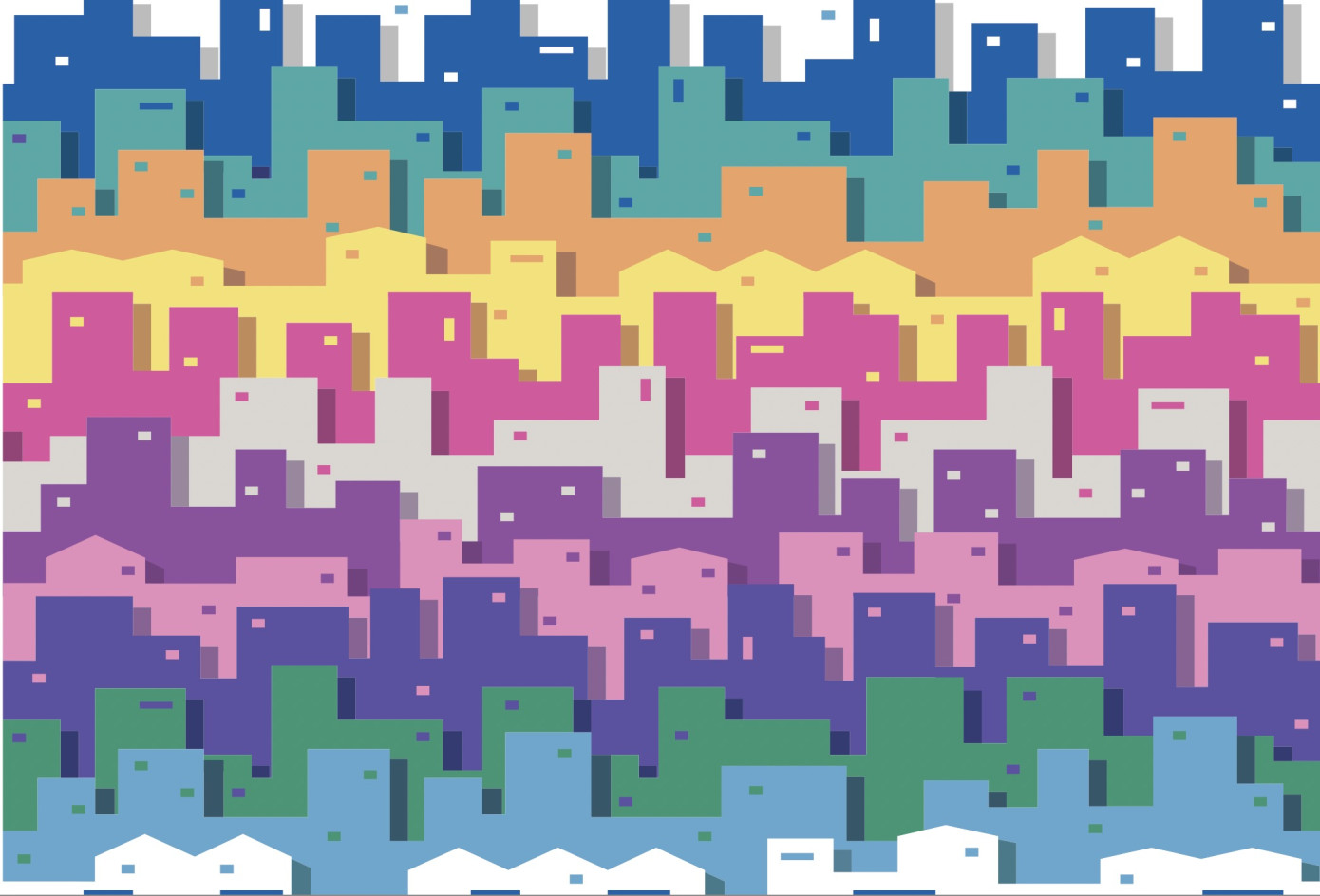Bubble risk in global housing markets continues to decline, according to the UBS Global Real Estate Bubble Index 2024. Miami tops the list with the highest bubble risk, followed by Tokyo and Zurich, despite Zurich's 15% drop in risk score compared to last year. UBS analyzed residential property prices in 25 major cities worldwide, with several markets showing signs of recovery after sharp price corrections in recent years.
For the second year in a row, average bubble risk decreased across the cities studied, with Miami facing the highest risk, fueled by a 50% rise in real housing prices since the end of 2019, including a 7% increase in the last four quarters. Tokyo follows closely with a 5% price increase in recent quarters, continuing its five-year trend of a 30% rise in real terms. Zurich, despite a notable decline in its risk score, has seen prices climb nearly 25% in the last five years.
In contrast, cities like Los Angeles and Toronto display more moderate risk levels, while Amsterdam, Sydney, and Boston show a 10% decline in prices. Cities like New York, San Francisco, and Warsaw register lower bubble risks. São Paulo has the lowest risk in the study, despite real prices slightly increasing for two consecutive years. Image: UBS Global Real Estate Bubble Index: Overview, 2024 / UBS
On average, housing prices fell 15% across the cities analyzed compared to mid-2022 when global interest rates began surging. Frankfurt, Munich, and Stockholm saw some of the largest corrections, with real prices dropping by more than 20%. Meanwhile, in cities like Dubai, real prices surged by almost 17%, and in sought-after areas like Vancouver, Sydney, and Madrid, prices increased by over 5% compared to last year, largely driven by housing shortages.
Across the board, affordability worsened, with a skilled service-sector employee able to afford 40% less living space compared to 2021. Despite rising interest rates, a tightening housing supply and increasing rents, which rose by 5% over the past two years, helped stabilize many urban markets. Image: Bubble risk scores for the housing markets of select cities / UBS
